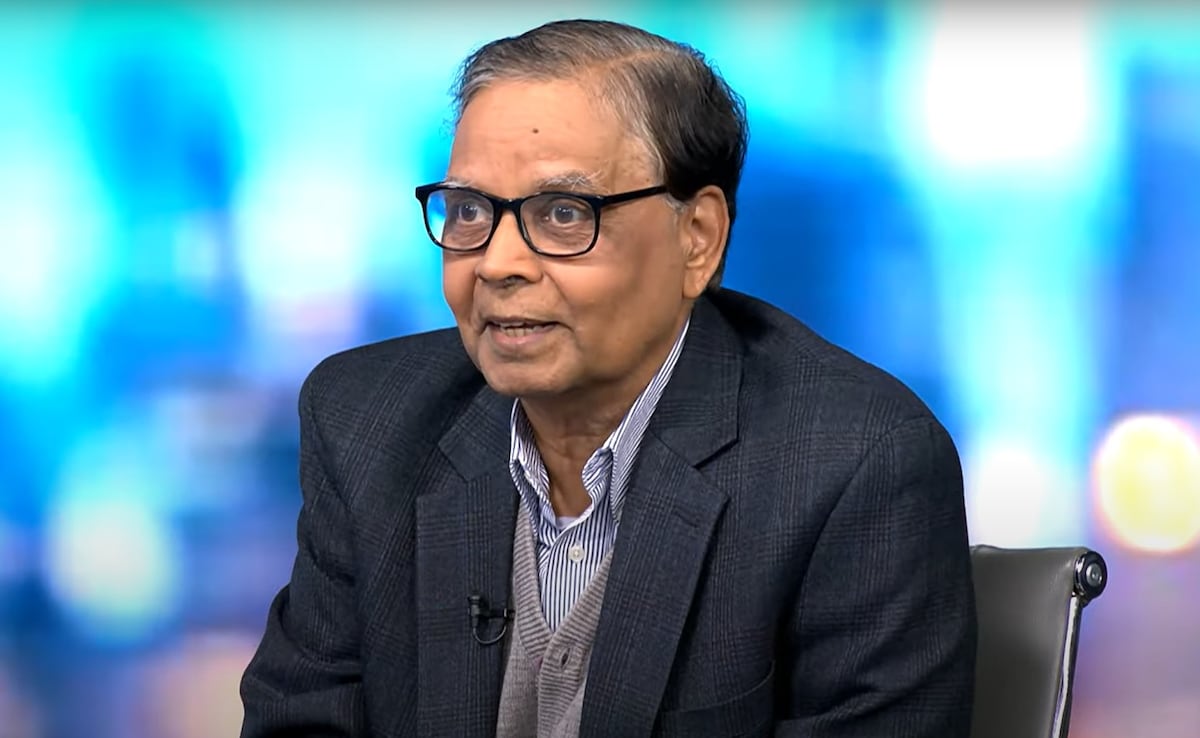New Delhi, India – An Insight into PM Modi’s Economic Challenges and Achievements
In an exclusive interview with NDTV, Dr. Arvind Panagariya, the Chairperson of the 16th Finance Commission, shared his insights on the Indian economy, particularly focusing on the challenges faced by Prime Minister Narendra Modi. According to Dr. Panagariya, PM Modi inherited a fragile economy from the previous Congress-led United Progressive Alliance (UPA) government. He emphasized that while significant progress has been made towards achieving a ‘viksit Bharat’ (developed India), further efforts are necessary to overcome the remaining hurdles.
Dr. Panagariya noted that the economic conditions during the final years of UPA rule had significantly deteriorated. He referred to two major legislations—the Right to Education Act and the Land Acquisition Act—enacted during that time, which he claimed created substantial barriers for subsequent administrations. He highlighted that the challenge of land acquisition, particularly for infrastructure projects, severely hampered growth and development initiatives—a problem that has persisted into PM Modi’s tenure.
What Were the Key Issues Faced by PM Modi?
The interview with Dr. Panagariya sheds light on several critical areas where PM Modi faced substantial challenges. The first was the economic fragility he inherited, which was characterized by stagnant growth and high inflation. The UPA’s legislative decisions led to complications that made infrastructure projects more difficult to implement. According to Dr. Panagariya, the Right to Education Act inadvertently hindered the quality of education instead of promoting it, while the Land Acquisition Act escalated the costs of land acquisition significantly.
Dr. Panagariya explained that in the context of linear infrastructure projects, such as road construction, land costs could account for up to 75% of the total project expenditure. Consequently, this meant that for projects which could have constructed 2 km of road, only 1 km could be built instead, due to excessive land costs. These barriers resulted in a slowdown of infrastructure development, which is vital for sustaining economic growth.
Dr. Panagariya also highlighted other complications within the economic and administrative systems that PM Modi inherited. For instance, he pointed out the bottlenecks related to environmental clearances that slowed down the progress of several infrastructural initiatives.
What Steps Has PM Modi Taken to Address These Challenges?
Despite the mounting challenges, Dr. Panagariya acknowledged that the Modi administration has made commendable strides in economic reforms. He emphasized the importance of clearing up the existing bottlenecks that hindered project execution. Key reforms, including the Goods and Services Tax (GST), the bankruptcy code, and the reduction of red tape, have been pivotal in transforming the economic landscape.
Additionally, Dr. Panagariya underscored the need for the implementation of the four new labour codes, which were enacted but have yet to see full execution. He mentioned that once implemented, these reforms could further enhance the ease of doing business in India and stimulate economic growth.
Looking ahead, Dr. Panagariya remarked that achieving a ‘viksit Bharat’ is within reach, contingent upon continuous improvements in governance and economic policy. He pointed out that India’s GDP growth rate has been robust over the last two decades, averaging around 10.2% in dollar terms. Despite global economic challenges, India remains on a path of impressive growth.
Infrastructure Development as a Cornerstone of Economic Growth
Infrastructure development is at the heart of Dr. Panagariya’s vision for India’s economic future. He emphasized that significant investments in areas like railways, civil aviation, and digital payments are essential for leveraging growth potential. The enhancement of infrastructure is crucial not only for improving connectivity but also for ensuring that economic benefits reach rural and underserved areas.
Dr. Panagariya’s confidence in India’s growth trajectory is evident. He cited that India’s GDP is projected to grow nearly 8% in the fiscal year 2024/25, which indicates a promising rebound. As per the report by Mint, this growth is crucial as India aims to establish itself as a developed economy by 2047.
The Path Ahead: Reforms and Implementations
As India sets its sights on becoming a developed nation, Dr. Panagariya emphasized the importance of sustained reforms and efficient implementation. He noted that there is a “whole host” of reforms still to be addressed, including those related to income tax, privatization, and reforms in higher education.
He reiterated that achieving a ‘viksit Bharat’ would require collective effort, not just from the administration but also from various stakeholders across industries and sectors. According to him, it is imperative to create an enabling environment that fosters innovation and attracts investments, thereby propelling India’s economy forward.
In closing, Dr. Panagariya expressed optimism about the future of India’s economic landscape. “For the last 20 years, India’s GDP growth rate in terms of current dollars has been impressive,” he stated, underscoring the resilience and potential of the Indian economy.
In a time of global uncertainties, India’s commitment to reform and development stands as a testament to its growth story. As more reforms are implemented and systemic barriers are removed, the dream of a ‘developed’ India appears more achievable than ever.


